Using Dried Molasses in the Garden
Okiedawn OK Zone 7
15 years ago
Featured Answer
Sort by:Oldest
Comments (22)
goneriding
15 years agolast modified: 9 years agoilene_in_neok
15 years agolast modified: 9 years agoRelated Discussions
Molasses For my Garden
Comments (12)How are your plants doing? That's the key question. The strong urge to "do SOMETHING" is best resisted. Go turn your compost heap, pull weeds, or something other than dumping money onto your soil. Having earthworms is NOT the only indicator of good or bad soil. And molasses will not attract them or make them anything but sticky. It's basically sugar syrup with incredibly tiny amounts of minerals. To make a significant boost to the mineral content you would have to use large quantities of it ... really large. Like barrels of it. A quart, diluted in a hose end sprayer and spread over your garden is going to deliver basically nothing. Here's the minerals per cup of blackstrap molasses ... note it's in milligrams per cup, or micrograms per cup. What is a significant part of the DAILY needs of a 150lb human is an incredibly tiny amount if spread out over the top 6 inches of dirt of a 20x40 foot plot as food for the bacteria. Calcium 691 mg Iron 15.9 mg Magnesium 816 mg Phosphorus 104 mg Potassium 4933 mg Sodium 125 mg Zinc 1.0 mg Copper 1.6 mg Manganese 5.2 mg Selenium 60.0mcg ============== Here's a list of recipes for culture media for various bacteria ... notice the quantities to make 1 liter of medium ... http://www.thelabrat.com/protocols/bacculture.shtml Here is a link that might be useful: The soil guy on molasses...See MoreAny recipes for seaweed emulsion using dried seaweed?
Comments (11)Sorry Admiral, just messing with you. It would be absurd to use food grade anything in your garden...including seaweed. Input costs should not exceed returns in my opinion. While seaweed and kelp might be good for your garden, it is not practical unless you live by the ocean. Look for a local organic material to incorporate in your soil...gotta be something. Look on farm and garden section of Craigslist to start....See MoreAlfalfa Meal vs Dairy Manure.... why choose one over the other?
Comments (10)Eddie, Enough, already! In SC. the pure sand soil type varies from place to place, yard to yard. Yet, through the years it has sustained the population, fed the Yankee Army as it pillaged and burned and contributed much in the way of research to the horticultural world. Random thoughts on the subject. 1. You seem frantic about pH. As you gain more experience and study other yards and farms noted will be the fact that plants can adapt to a wide range of situations, especially if you select some of the quality types which have been developed by Clemson, UGA, et al, specifically for the south. The best vegetable garden I have seen in the south was on Spring Island, SC. which is a very private plantation. The owner of the garden, while out riding his horse in the depths of the Island discovered the old saw mill and huge mounds of pine sawdust/bark composted over the centuries. He built raised beds and filled them with nothing but this very acid pine compost soil. The results are unbelievable. Brassicas that look like those pictures of crops grown in Alaska. 2. Suggest you not use or compost fresh animal manures in the south. It is loaded with Bahia Grass seed. Once introduced into a garden it will forever be a weeding nightmare. Ditto hairy vetch. Your best cover crop in the veggie garden is the constant use of straw and the Ruth Stout method. Look it up. 3. Nutrients added to sandy soil quickly leach into the underworld. Your job is to figure out how to slow this process down. Forget about tilling. 4. I'm going to cut to the chase here. Place all you reports, studies, questions in the back of a dark drawer for this year. Plant your winter veggie garden using several handfuls of bagged mushroom compost in each planting hole or spread in the bottom of rows plus a handful of dried molasses which will discourage various root insects. Water in as you plant. Now, spread pine needles as a mulch over all. Yes, I know they are acid. Don't worry about it. Press on. On top of the pine straw spread the dark, rich pine bark mulch mixed with any compost on hand. Over this a light scattering of straw. This should be all you need do to grow veggies, repeated annually, building the soil. Amend sandy soils at the surface. Spend your efforts on developing compost, of which 25% pine bark compost should be incorporated. Great stuff! Use it....See MoreBest book ever for PNW gardeners whose soil dries out in summer
Comments (1)I may have looked at it, location sounds familiar. As you say most such works don't really address our conditions, talking instead about California or being written in a wetter climate - I once read one that listed Styrax japonicus as a drought resistant tree....See MoreOkiedawn OK Zone 7
15 years agolast modified: 9 years agoOkiedawn OK Zone 7
15 years agolast modified: 9 years agoilene_in_neok
15 years agolast modified: 9 years agosoonergrandmom
15 years agolast modified: 9 years agosoonergrandmom
15 years agolast modified: 9 years agovery_blessed_mom
15 years agolast modified: 9 years agoilene_in_neok
15 years agolast modified: 9 years agoOkiedawn OK Zone 7
15 years agolast modified: 9 years agovery_blessed_mom
15 years agolast modified: 9 years agoOkiedawn OK Zone 7
15 years agolast modified: 9 years agovery_blessed_mom
15 years agolast modified: 9 years agoOkiedawn OK Zone 7
15 years agolast modified: 9 years agogoneriding
15 years agolast modified: 9 years agoOkiedawn OK Zone 7
15 years agolast modified: 9 years agoMariposaTraicionera
15 years agolast modified: 9 years agoOkiedawn OK Zone 7
15 years agolast modified: 9 years agorickylynn
14 years agolast modified: 9 years agoelkwc
14 years agolast modified: 9 years agoclaudieboy
13 years agolast modified: 9 years ago
Related Stories
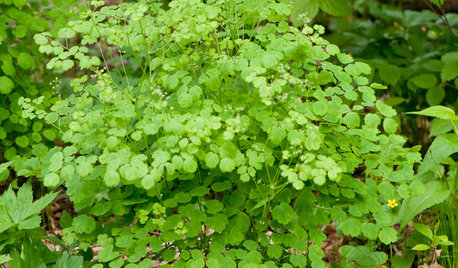
GARDENING GUIDESGreat Design Plant: Thalictrum Dioicum Thrives in Dry Shade
Plant early meadow-rue in eastern U.S. woodland gardens for its tolerance of dry sites and shade
Full Story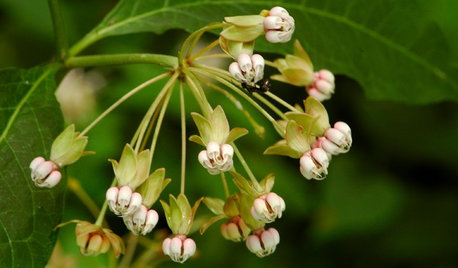
GARDENING GUIDES5 Unsung Wildflowers That Thrive in Dry Shade
Turn shady problem spots into garden idylls with with these prolific, easy-care bloomers
Full Story
FLOWERS AND PLANTSCarex Pensylvanica Fills the Void in Dry Shade Gardens
Plant Pennsylvania sedge in eastern U.S. woodlands or dry shade gardens for spring flowers and softly textured bright green leaves
Full Story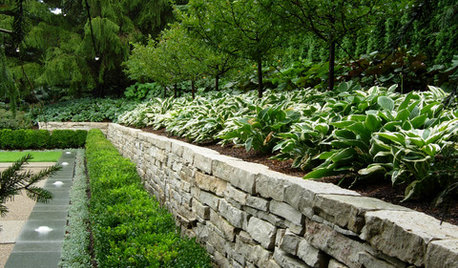
LANDSCAPE DESIGNGarden Walls: Dry-Stacked Stone Walls Keep Their Place in the Garden
See an ancient building technique that’s held stone walls together without mortar for centuries
Full Story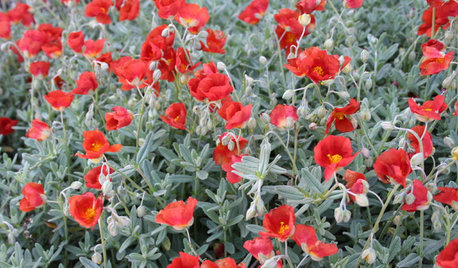
GARDENING GUIDESGreat Design Plant: Sunrose Dazzles on Dry Slopes
Abundant blooms and attractive foliage make this plant a welcome sight in sunny, well-drained spots
Full Story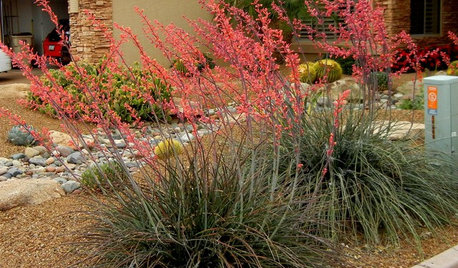
GARDENING FOR BUTTERFLIESGreat Design Plant: Red Yucca Spikes Dry Spots With Color
Neither heat nor cold nor lack of water fazes this flowering succulent, which adds spiky texture to Southwestern landscapes
Full Story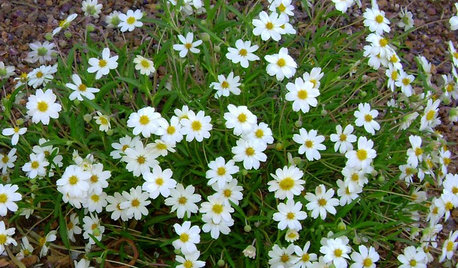
GROUND COVERSGreat Design Plant: Blackfoot Daisy for Prettier Dry Ground
Don’t let its delicate looks fool you. This ground cover can survive extreme cold and heat, and with little water to boot
Full Story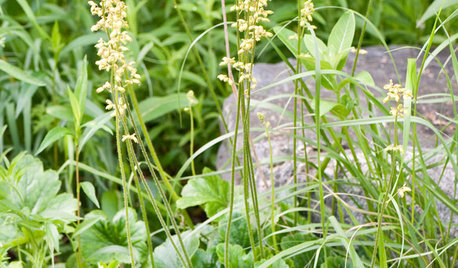
FLOWERS AND PLANTSHeuchera Richardsonii Flourishes in Sunny, Dry Spots
Plant Richardson’s alumroot for spring blooms in north-central perennial gardens, rock gardens and informal prairie plantings
Full Story0
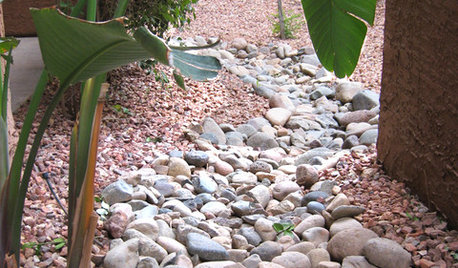
GARDENING AND LANDSCAPINGDry Riverbeds Solve Water Runoff
Spring rains don't have to lead to slides. Dry riverbeds redirect water runoff and add beauty to your landscape
Full Story
FLOWERS AND PLANTSMirabilis Multiflora Brings a Burst of Magenta to Dry Gardens
Plant this high desert native for its copious blooms, mounding habit and appeal to hummingbirds
Full Story


Okiedawn OK Zone 7Original Author